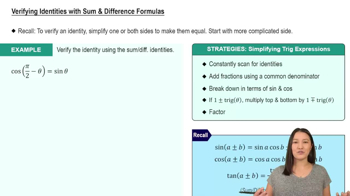Textbook Question
Find the exact value of each expression. (Do not use a calculator.)
cos(-15°)
596
views
 Verified step by step guidance
Verified step by step guidance Verified video answer for a similar problem:
Verified video answer for a similar problem:



 6:14m
6:14mMaster Sum and Difference of Sine & Cosine with a bite sized video explanation from Patrick
Start learning